Top Ten Safety Courses
Top selling courses
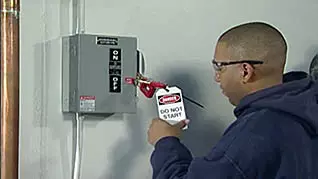
Workplace safety is a big deal. Ignore it at your peril. While rates change per year reported, we know that in 2014 for example, 3 million non-fatal workplace injuries and illnesses were reported, and 4,679 workers were killed on the job. The National Safety Council reports that someone is injured on the job every six seconds. These injuries and illnesses are no laughing matter – they cost American businesses $250 billion each year in medical expenses and lost productivity. With all this in mind, we have assembled the top 10 safety courses requested by our customers.
See the top 10 safety courses listed below and don’t forget to ask for our full library of over 1800 courses, to help your employees take their skills to the next level.
Our Best Selling Safety Courses:
10. Lockout/Tagout: Authorized Employees
 Through this on-demand training video, you will learn the difference between the roles of authorized and affected employees, as well as the specific lockout/tagout steps. Furthermore, you will also become familiar with the devices used in the lockout/tagout process.
Through this on-demand training video, you will learn the difference between the roles of authorized and affected employees, as well as the specific lockout/tagout steps. Furthermore, you will also become familiar with the devices used in the lockout/tagout process.
9. Storm Warnings: Storm Water Pollution Prevention
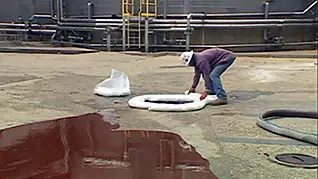 This online video teaches viewers about the Best Management Practices (BMP) to protect storm water and run-off. Learning to protect storm water from contamination requires a little education and a little extra effort. This video will educate workers about how to properly manage the supplies and waste at their outside work site.
This online video teaches viewers about the Best Management Practices (BMP) to protect storm water and run-off. Learning to protect storm water from contamination requires a little education and a little extra effort. This video will educate workers about how to properly manage the supplies and waste at their outside work site.
8. Fire: Fire Extinguisher Training for Employees
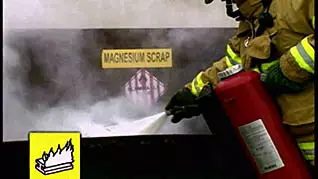 This online training video teaches employees how to properly maintain and safely use fire extinguishers in the workplace. A fire can occur at any place, at any time and it is important for employees to know when and how to use a fire extinguisher if necessary.
This online training video teaches employees how to properly maintain and safely use fire extinguishers in the workplace. A fire can occur at any place, at any time and it is important for employees to know when and how to use a fire extinguisher if necessary.
7. Hazard Communication and The Global Harmonizing System
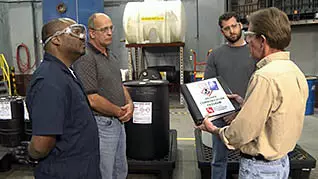 Hazardous chemicals are found in approximately 7 million workplaces. In 1983, OSHA introduced the Hazard Communication Standard requiring a Hazard Communication Program to communicate workplace hazards to employees. Use this training to prepare your employees to understand the Global Harmonizing System and how it affects your hazard communication program.
Hazardous chemicals are found in approximately 7 million workplaces. In 1983, OSHA introduced the Hazard Communication Standard requiring a Hazard Communication Program to communicate workplace hazards to employees. Use this training to prepare your employees to understand the Global Harmonizing System and how it affects your hazard communication program.
6. DOT: HAZMAT: General Awareness
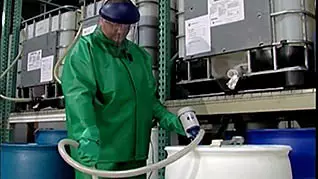 Handling hazardous materials is of particular importance because of the obvious dangers they pose to your health; in the United States alone, there are over 800,000 shipments of hazardous materials every day. The DOT has developed a set of materials specifically addressing the transportation of hazardous materials, and you will learn about them through this training video.
Handling hazardous materials is of particular importance because of the obvious dangers they pose to your health; in the United States alone, there are over 800,000 shipments of hazardous materials every day. The DOT has developed a set of materials specifically addressing the transportation of hazardous materials, and you will learn about them through this training video.
5. Surviving The Fall: The Proper Use Of Your Personal Fall Arrest System
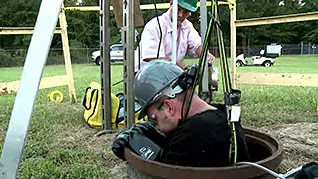 Knowing how to properly inspect and use a personal fall arrest system enforces your commitment to safety. Personal fall arrest systems allow workers to survive a fall with minimal injury. Use this online video training and learn how to properly use a personal fall arrest system and the common mistakes to avoid.
Knowing how to properly inspect and use a personal fall arrest system enforces your commitment to safety. Personal fall arrest systems allow workers to survive a fall with minimal injury. Use this online video training and learn how to properly use a personal fall arrest system and the common mistakes to avoid.
4. DOT: HAZMAT: Security Awareness
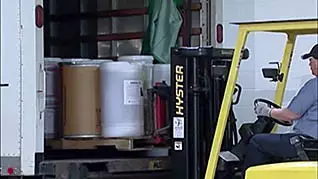 It is necessary for employees and managers working with hazardous materials to be able to maintain high security measures and know the protocol for preventing theft during deliveries and shipments. It is also important to know how to store these materials, and protect the privacy of where they are stored and when they are shipped. Learn about the DOT security practices necessary for shipping HAZMATs in this course.
It is necessary for employees and managers working with hazardous materials to be able to maintain high security measures and know the protocol for preventing theft during deliveries and shipments. It is also important to know how to store these materials, and protect the privacy of where they are stored and when they are shipped. Learn about the DOT security practices necessary for shipping HAZMATs in this course.
3. Electrical Safety-Related Work Practices and the 2021 NFPA 70E for Supervisors and Managers
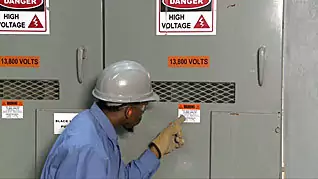 The NFPA has developed a set of standards called the 70E, its set of standards for electrical safety in the workplace. Originally developed at the request of the OSHA, it assists companies and employees to avoid workplace injuries and fatalities due to electrical emergencies and hazards and helps in complying with certain OSHA regulations.
The NFPA has developed a set of standards called the 70E, its set of standards for electrical safety in the workplace. Originally developed at the request of the OSHA, it assists companies and employees to avoid workplace injuries and fatalities due to electrical emergencies and hazards and helps in complying with certain OSHA regulations.
2. Fire Extinguishers: Ready to Respond
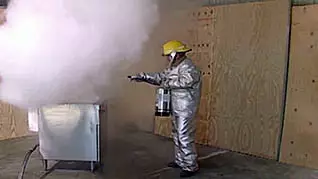 This course teaches your employees about the causes of fires, what fuels them and what is needed to extinguish them. There are five classes of fire and each requires a different type of extinguisher. This is both cost-saving and potentially lifesaving knowledge to possess.
This course teaches your employees about the causes of fires, what fuels them and what is needed to extinguish them. There are five classes of fire and each requires a different type of extinguisher. This is both cost-saving and potentially lifesaving knowledge to possess.
1. Bloodborne Pathogens: Always Protect Yourself
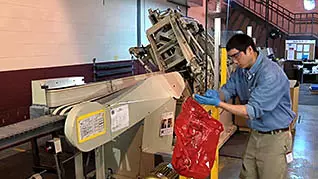 This online training explains the safety measures workers should practice to prevent the spread of bloodborne pathogens. The course topics cover exposure routes, universal precautions, personal protective equipment, safe work practices, clean up/disposal and exposure follow-up procedures.
This online training explains the safety measures workers should practice to prevent the spread of bloodborne pathogens. The course topics cover exposure routes, universal precautions, personal protective equipment, safe work practices, clean up/disposal and exposure follow-up procedures.
Get You and Your Team Trained Up